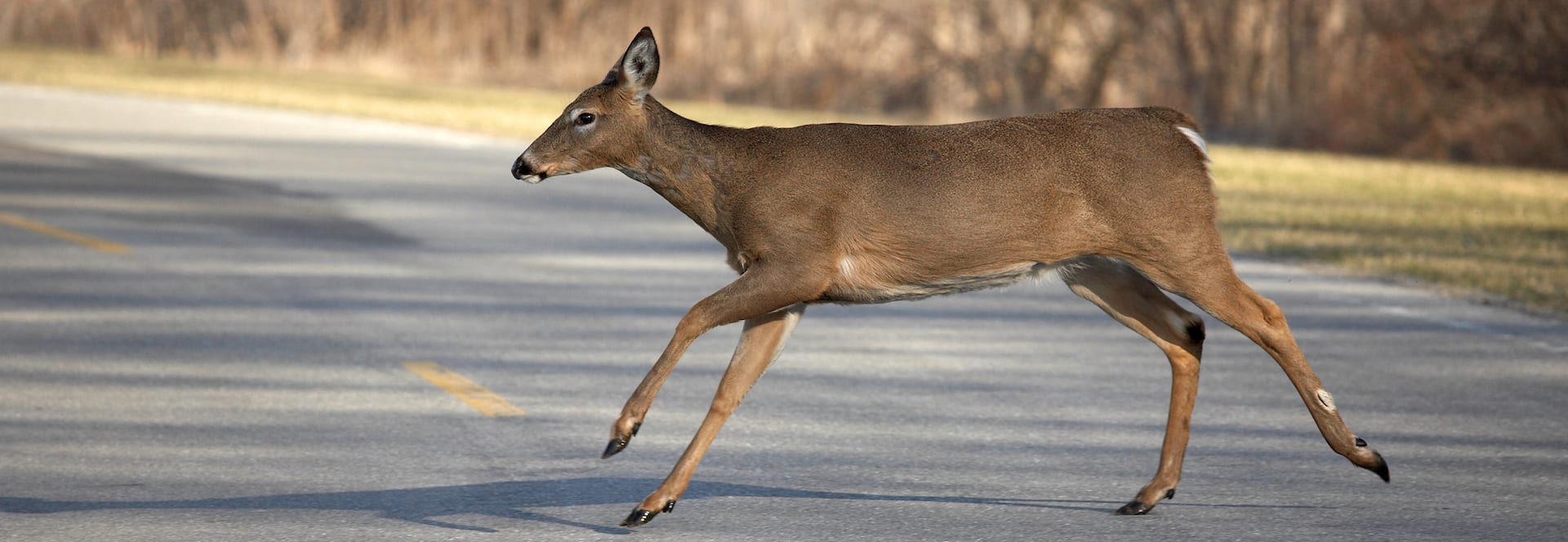
You don’t have to spend much time driving in Georgia to know that collisions with deer on the road are common. And Georgia’s not the only state with this problem. As deer populations rise dramatically, collisions have inevitably become common as well – over 1.5 million accidents involving deer every year in the United States.
When you hit a deer with your car, the damage to your vehicle can be quite extensive, and there are some very real dangers to your person as well. More than 100,000 people are sent to the hospital for injuries incurred from accidents involving deer. And more than 200 people a year are even less fortunate and die in an accident involving a deer. For example, several years ago, after hitting a deer, a family van slowed down on a state highway – only to be hit by a semi traveling at 65 mph. Almost everyone in the van was killed in the crash.
A collision between an automobile and a deer is often unavoidable. But that doesn’t mean you can’t drive defensively. Here are a few tips for motorists.
Avoiding Deer Collisions
There are a few simple steps to remember when driving in areas that are known to have deer, and if we keep these tips in mind, even the most unexpected deer sighting doesn’t have to turn into a collision or accident situation.
- The Warnings are there for a reason – While this may seem like common sense, it is the first step to avoiding a collision with a forest dweller. If a sign warns you about deer, it is probably there because of another driver had an unlucky encounter there.
- Where there is one, there are more – Deer generally travel together, and if you see one deer near the road, there are bound to be more around. Be cautious and assume that there are more animals following to make the best of the situation.
- Pay extra attention at dawn and dusk – Deer are especially active in early morning hours and at dusk, times at which visibility is usually poor anyway. If possible, try to drive slower at these times in regions known for having deer.
- Pay attention to the time of year – Collisions with deer are more common during the autumn mating season.
- On a busy city road? — There can still be deer, even in urban settings. Don’t take your safety for granted when driving on a highway or city street.
- Don’t swerve – Although your natural impulse may be to swerve to avoid a deer, you may be safer hitting it head on. No one wants to kill a wild creature, but it is a better than the alternatives of swerving into oncoming traffic or running off the road.
What if I Hit a Deer?
Some accidents with deer are unavoidable, so it is important to know what to do if you happen to hit a deer. First, move your vehicle out of the way and put on your hazards. Check that you and your passengers are not hurt. Do not attempt to move the deer from the road – this could put you in danger, either from a wounded animal, or from other traffic. Finally, call 911. Your auto insurance will likely require a police report of the accident. And police will know what to do to remove the deer from the road.